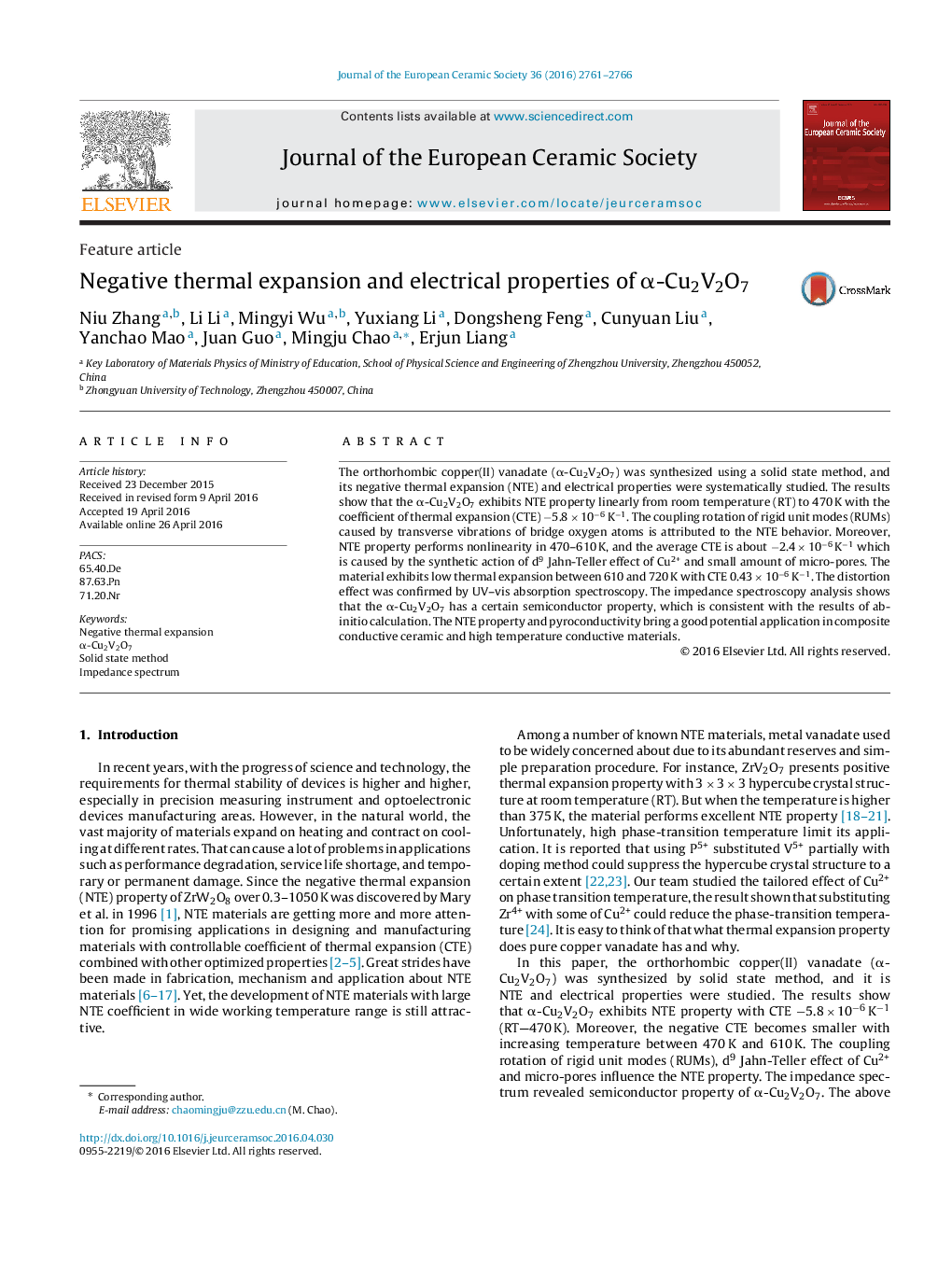| Article ID | Journal | Published Year | Pages | File Type |
|---|---|---|---|---|
| 10629256 | Journal of the European Ceramic Society | 2016 | 6 Pages |
Abstract
The orthorhombic copper(II) vanadate (α-Cu2V2O7) was synthesized using a solid state method, and its negative thermal expansion (NTE) and electrical properties were systematically studied. The results show that the α-Cu2V2O7 exhibits NTE property linearly from room temperature (RT) to 470 K with the coefficient of thermal expansion (CTE) â5.8 Ã 10â6 Kâ1. The coupling rotation of rigid unit modes (RUMs) caused by transverse vibrations of bridge oxygen atoms is attributed to the NTE behavior. Moreover, NTE property performs nonlinearity in 470-610 K, and the average CTE is about â2.4 Ã 10â6 Kâ1 which is caused by the synthetic action of d9 Jahn-Teller effect of Cu2+ and small amount of micro-pores. The material exhibits low thermal expansion between 610 and 720 K with CTE 0.43 Ã 10â6 Kâ1. The distortion effect was confirmed by UV-vis absorption spectroscopy. The impedance spectroscopy analysis shows that the α-Cu2V2O7 has a certain semiconductor property, which is consistent with the results of ab-initio calculation. The NTE property and pyroconductivity bring a good potential application in composite conductive ceramic and high temperature conductive materials.
Related Topics
Physical Sciences and Engineering
Materials Science
Ceramics and Composites
Authors
Niu Zhang, Li Li, Mingyi Wu, Yuxiang Li, Dongsheng Feng, Cunyuan Liu, Yanchao Mao, Juan Guo, Mingju Chao, Erjun Liang,
